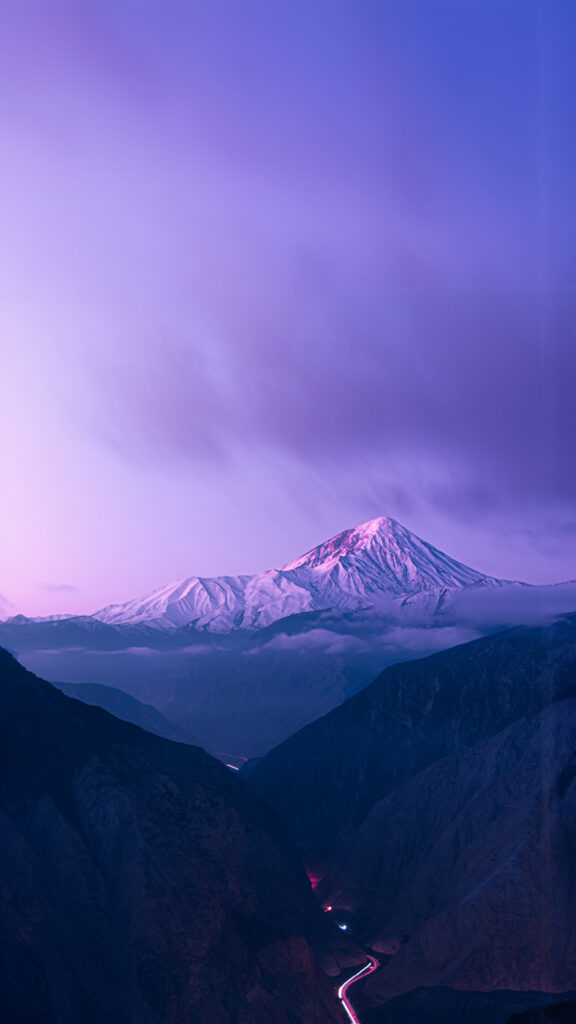Mount Damavand: The Jewel of Iran’s Crown
Nestled in the beautiful Alborz mountain range in northern Iran, Mount Damavand is the country’s highest peak and one of the most renowned landmarks in the Middle East. This majestic mountain stands at 5,610 meters above sea level and has become a symbol of strength and resilience in Iranian culture. For centuries, Mount Damavand has captivated the imagination of locals and travelers alike, beckoning them to explore its stunning landscapes and marvel at its majestic beauty.
This article will provide an introduction to Mount Damavand, including information about its history, geography, and attractions. We’ll also discuss the best way to experience the mountain and some tips for planning a successful trek. So, let’s get started!
A Brief History of Mount Damavand
Mount Damavand has been part of Iranian mythology and culture for centuries. It is believed to have been formed millions of years ago, when the Arabian and African tectonic plates collided. The mountain has been immortalized in Persian literature, poetry, and art, and is often referred to as the “Jewel of Iran’s Crown”. It is said to be the home of the mythical Persian hero, Rostam, and is considered the country’s national symbol.
Geography and Climate of Mount Damavand
Mount Damavand is located in the middle of the Alborz mountain range in northern Iran and is surrounded by lush forests, meadows, and rivers. It is the highest peak in the country and the highest volcano in all of Asia. The mountain is an inactive stratovolcano with a crater at the summit.
The climate around Mount Damavand is typically cold and dry, with temperatures ranging from -20°C in the winter to around 10°C in the summer. Snow can be found on the peak year-round, and the mountain is often covered in a blanket of clouds.
Attractions and Activities Around Mount Damavand
Mount Damavand is a popular destination for outdoor enthusiasts from all over the world. The mountain is home to a variety of attractions, including several hot springs, a number of hiking trails, and stunning views of the surrounding landscapes.
One of the most popular activities on the mountain is trekking. The trekking routes vary in difficulty, from the beginner-friendly 3-day trek to the challenging 5-day trek. There are also several mountaineering routes that are suitable for experienced climbers.
In addition to trekking and mountaineering, visitors can enjoy fishing, climbing, bird-watching, and other outdoor activities. The nearby towns of Polour and Lavasan are also popular destinations, offering a range of accommodation, restaurants, and shops.
How to Experience Mount Damavand
If you’re planning a trip to Mount Damavand, the best way to experience the mountain is to join a guided tour. There are several tour operators that offer trekking and mountaineering trips, as well as day trips to the nearby towns.
Before embarking on your trek, it’s important to ensure that you have the right gear and clothing. It’s also important to plan your route in advance and to make sure you have enough food and water. Most of the trekking routes will require a guide, so it’s best to book one in advance.
Tips for Planning a Successful Trek
When planning your trek to Mount Damavand, it’s important to remember a few key tips:
- Pack light: Make sure you only bring the essentials and leave behind any bulky items.
- Acclimatize: Take the time to acclimatize to the altitude, especially if you’re coming from lower elevations. This can help prevent altitude sickness.
- Choose the right time: The best time to trek Mount Damavand is during the summer months (June to September) when the weather is milder. Winter treks are possible but require additional preparation.
- Stay hydrated: Due to the altitude and dry climate, staying hydrated is crucial. Carry enough water and drink regularly throughout your trek.
- Respect the environment: Mount Damavand is a protected natural area. Follow Leave No Trace principles, and avoid leaving any litter behind. Respect local flora and fauna.
- Hire a guide: While some experienced trekkers may navigate the mountain independently, hiring a guide is recommended, especially for those less familiar with the region. A guide can enhance safety and provide valuable insights into the local culture and geography.
- Be aware of your limits: Mount Damavand’s higher altitudes can be physically demanding. Listen to your body, know your limits, and don’t push yourself too hard.
- Check local regulations: Make sure you are aware of any permits or regulations required for trekking in the Mount Damavand region. This information can be obtained from local authorities or your tour operator.
By keeping these tips in mind and planning your trek carefully, you can have a memorable and rewarding experience exploring the breathtaking landscapes of Mount Damavand.
Conclusion
Mount Damavand is a symbol of natural beauty, resilience, and cultural significance in Iran. Whether you’re an avid trekker, a nature lover, or someone seeking a unique adventure, Mount Damavand offers a remarkable journey. From its mythical history to the diverse flora and fauna, the mountain provides a rich tapestry for exploration. Consider adding this iconic peak to your travel itinerary for an unforgettable experience in the heart of the Alborz mountain range.

